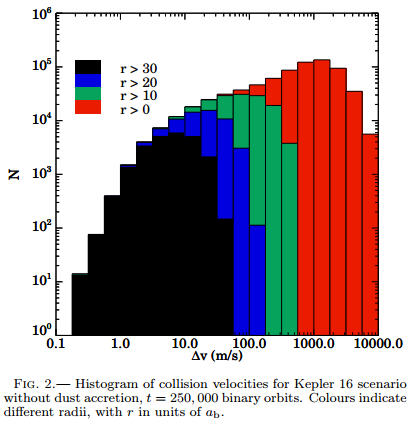The linchpin location of the "Star Wars" franchise was the planet Tatooine, home to both Luke Skywalker and Obi-Wan Kenobi. It, along with its twin suns, appeared in every movie of the franchise except "The Empire Strikes Back".
How would such a planet, orbiting two stars, form? There are few environments more extreme than a binary star system, if you are forming a planet.
Kepler-34(AB)b has some answers, according to a new study. Like Tatooine, Kepler-34(AB)b is a circumbinary planet, its orbit encompasses two stars. Since powerful gravitational perturbations from two stars lead to destructive collisions that grind down planetary material, the existence of such planets can be difficult to explain.
Unless the planet didn't form there at all. Writing in Astrophysical Journal Letters, Dr. Zoe Leinhardt and colleagues from the University of Bristol's School of Physics have completed computer simulations of the early stages of planet formation around binary stars, using a model that calculates the effects of gravity and physical collisions on and between one million planetary building blocks.
They conclude that the majority of these planets must have formed much further away from the central binary stars and then migrated to their current location.

Kepler 16, 34 and 35 planetary evolution. Credit:
arXiv:1206.3484
Leinhardt says, "Our simulations show that the circumbinary disk is a hostile environment even for large, gravitationally strong objects. Taking into account data on collisions as well as the physical growth rate of planets, we found that Kepler 34(AB)b would have struggled to grow where we find it now."
Based on these conclusions for Kepler-34, it seems likely that all of the currently known circumbinary planets have also migrated significantly from their formation locations - with the possible exception of Kepler-47 (AB)c which is further away from the binary stars than any of the other circumbinary planets.
Stefan Lines, lead author of the study, said, "Circumbinary planets have captured the imagination of many science-fiction writers and film-makers - our research shows just how remarkable such planets are. Understanding more about where they form will assist future exoplanet discovery missions in the hunt for earth-like planets in binary star systems."
References:
S. Lines, Z. M. Leinhardt, S. Paardekooper, C. Baruteau2, and P. Thebault, 'Forming Circumbinary Planets: N-body Simulations of Kepler-34', ApJ 782 L11. doi:10.1088/2041-8205/782/1/L11
Source: University of Bristol




Comments